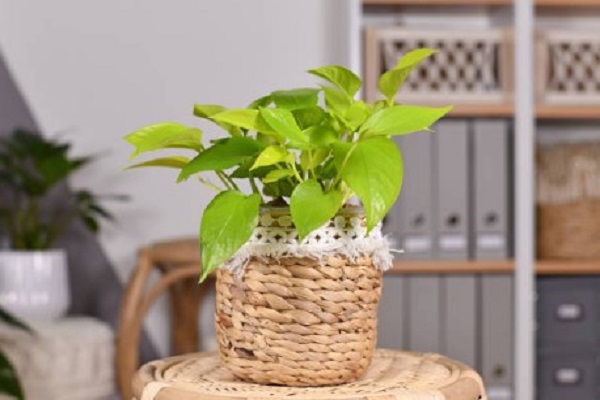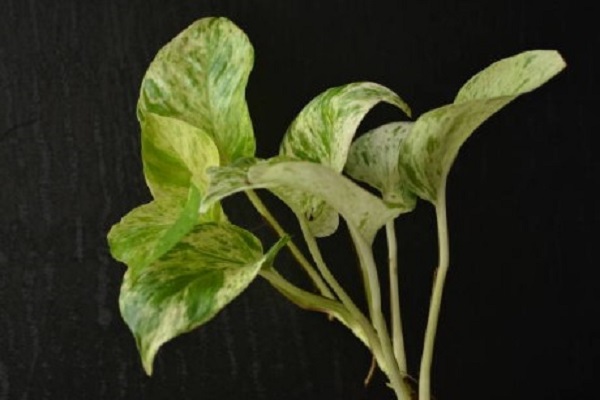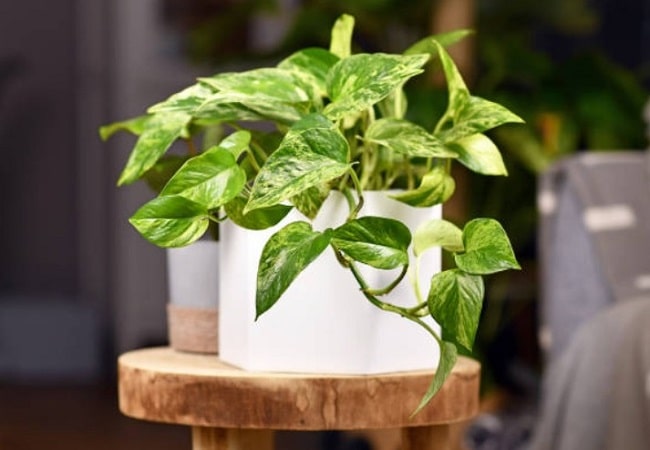Last Updated on May 5, 2023 by Md Deloar Hossain
Golden Pothos leaves turning yellow, known as Epipremnum aureum or Devil’s Ivy, is a popular, easy-to-grow houseplant cherished for its vibrant, heart-shaped leaves and trailing vines. However, like any other living organism, it can experience issues affecting its overall health and appearance. One common problem Golden Pothos owners face is the yellowing of leaves, which can be disheartening and perplexing.
This article will explore the various factors contributing to yellowing leaves, such as overwatering, underwatering, insufficient light, nutrient deficiencies, etc. By understanding the causes, you can take the necessary steps to nurse your beloved plant back to health and maintain its lush, verdant allure.
Quick Navigation
Causes of Yellow Pothos Leaves

There are several causes for yellowing leaves on a Golden Pothos plant. Understanding these factors can help you identify the problem and take appropriate action to restore your plant’s health.
Overwatering
Overwatering is a common reason for yellow leaves. Excess water can cause root rot, which leads to poor nutrient absorption and yellowing leaves. Don’t water the soil again until it has dried out a little.
Underwatering
Insufficient water can also cause yellow leaves. When underwater, the plant becomes stressed, and older leaves may turn yellow and drop off. Ensure a consistent watering schedule, keeping the soil moist but not soggy.
Light conditions
Inadequate light exposure can result in yellow leaves. Golden Pothos prefers bright, indirect light. Transplant your plant somewhere brighter, but not in full sunshine where it would be scorched.
Nutrient deficiencies
A lack of essential nutrients, particularly nitrogen, can cause leaves to turn yellow. Regularly fertilize your plant with a balanced, water-soluble fertilizer to provide the necessary nutrients.
Temperature fluctuations

Extreme temperature changes can stress the plant and cause leaves to turn yellow. Maintain a consistent temperature of 65-85°F (18-29°C) for optimal growth.
Pests or disease
Pests like spider mites, mealybugs, and aphids can cause yellow leaves. Check for infestations and treat them accordingly. To prevent yellowing from fungal diseases, it’s important to provide adequate air circulation and not overwater your plants.
Addressing these potential causes can help prevent yellow leaves and maintain a healthy, thriving Golden Pothos plant.
Should I remove yellow leaves from pothos?

Yes, it is advisable to remove yellow leaves from your Pothos plant. Yellow leaves will not regain their green color, making the plant look unhealthy. Removing them, you help improve the plant’s appearance and encourage new growth. Use fresh sharp scissors or pruning shears to make a clean cut close to the stem and remove any leaves that have turned yellow.
This will prevent damage to the remaining healthy parts of the plant. Be sure to address the underlying cause of the yellow leaves so that your Pothos can recover and produce new, healthy green foliage. In addition to minimizing the likelihood of fungal diseases and pest infestations, regular leaf removal also helps maintain optimum circulation of air around the plant.
Can Yellow Pothos Leaves Turn Green Again?

Once a Golden Pothos leaf has turned yellow, it cannot revert to its original green color. Yellow leaves are a symptom of stress or an issue that the plant is experiencing. When the underlying problem is addressed, the plant can focus on producing new, healthy green leaves.
If you notice yellow leaves on your Pothos, it’s essential to identify the cause and rectify the issue as soon as possible. While the yellow leaves won’t regain their green color, you can trim them off to maintain the plant’s appearance and encourage new growth.
With proper care, a Golden Pothos can quickly recover from stress, and its new leaves should be healthy and green. Ensure you provide adequate light, water, temperature, and nutrients to keep your plant thriving and minimize the occurrence of yellow leaves.
FAQs
Why is my Golden Pothos leaves turning yellow?
Yellow leaves on a Golden Pothos can be due to several factors, including overwatering, underwatering, insufficient light, nutrient deficiencies, temperature fluctuations, pests, or disease.
How do I fix yellow leaves on my Pothos?
To fix yellow leaves, identify the underlying cause and address it accordingly. Adjust your watering schedule, ensure adequate light, provide proper nutrients, maintain consistent temperatures, and treat pests or diseases as needed.
Can yellow pothos turn green again?
No, once a Pothos leaf has turned yellow, it cannot revert to its original green color. However, the plant can produce new, healthy green leaves by addressing the underlying issue.
Does Pothos like direct sunlight?
Golden Pothos plants prefer bright, indirect light. Direct sunlight can scorch their leaves, so avoiding placing them in direct sun is best. A spot near a north or east-facing window or filtered light from a south or west-facing window works well for Pothos.
What does an overwatered Pothos look like?
An overwatered Pothos may exhibit yellowing leaves, wilting even with wet soil, mushy or black roots, and a rotting smell. Root rot, caused by overwatering, reduces a plant’s ability to take up nutrients, resulting in stunted development and discolored leaves.
Conclusion
Yellow leaves on a Golden Pothos indicate various issues, such as overwatering, underwatering, inadequate light, nutrient deficiencies, temperature fluctuations, or pest and disease problems. Identifying and addressing the underlying cause is essential to restore your plant’s health and vibrancy. While yellow leaves will not turn green again, removing them improves the plant’s appearance and promotes new growth. By providing the proper care and promptly addressing any problems, you can maintain healthy, thriving Golden Pothos with lush green foliage, making it a beautiful and cherished addition to your indoor garden.

My name is Md Deloar Hossain and I’m the creator of Club Gardening, designed for all your gardening ideas, gardening product reviews, and a place to help you find the best gardening experience possible.


